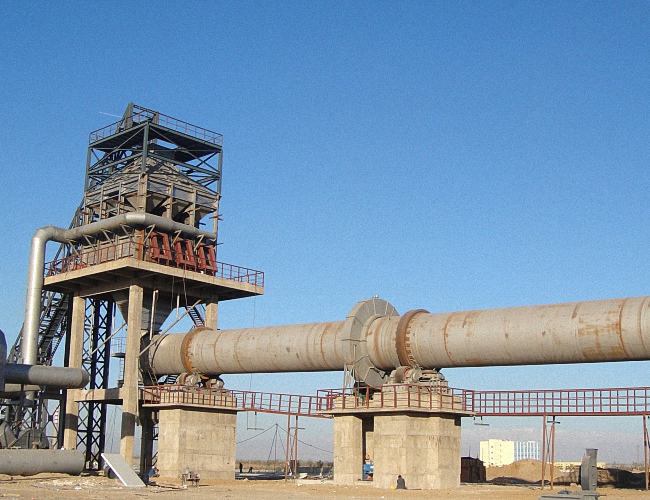- +8618937185591
- +8618937185591
- ec19@zkcorp.com
- +8618937185591

Rotary kiln refers to rotary calcining kiln, which is mainly applicable to rotary kiln clinker refractory materials, bauxite, alumina, hematite, limestone, dolomite, etc.

Rotary kiln refers to rotary calcining kiln, which is mainly applicable to rotary kiln clinker refractory materials, bauxite, alumina, hematite, limestone, dolomite, etc. Rotary kiln plays an important role in the cement production line. The article ZK CORP to introduce the five major functions of the rotary kiln.
First, the fuel combustion function
As a fuel combustion device, it has a vast space and thermal field, can supply enough air, install an excellent combustion device, ensure the fuel is fully burned, and provide necessary heat for clinker calcination.
Second, hot swap function
As a heat exchange equipment, it has a relatively uniform temperature field and can meet the heat exchange requirements in various stages of the cement clinker formation process.
Third, chemical reaction function
As a chemical reactor, with the different needs of different stages of cement clinker minerals, it can not only meet the requirements of different minerals to form heat and temperature in stages, but also meet their requirements for time. It is currently used for cement curing. The best equipment for the final formation of minerals, there is no other equipment to replace.
Fourth, material transport function
As a conveying device, it has a greater potential because the filling rate, kiln slope and rotation speed of the material in the section of the rotary kiln are very low.
Fifth, degradation and utilization of waste functions
With the enhancement of the awareness of protecting the global environment and the development of the cement industry technology, the superior environmental protection function of the rotary kiln has been rapidly excavated since the 20th century. Its high-temperature, avid thermal field has become the best device for degrading and using all kinds of toxic, hazardous and hazardous wastes.
This shows that rotary kiln has a variety of functions and good quality. Therefore, for nearly half a century, it has been solely responsible for the calcination of clinker in cement production. However, there are two major shortcomings and shortcomings of rotary kiln. One is as a heat exchange device. The heat flow in the kiln between the hot gas flow and the material is mainly “accumulated” heat exchange, and the heat exchange efficiency is low, thus affecting its proper the full production efficiency and the reduction of energy consumption. The other is that the fuel needed for the calcination process is all supplied from the hot end of the kiln, and the fuel is burned under the high temperature and oxygen-enriched conditions in the kiln calcining zone to generate a large number of harmful components. Slow cooling also affects clinker quality. Therefore, since the birth of the cement rotary kiln, technological innovations have been centered on overcoming and improving its shortcomings in order to achieve the goal of avoiding weaknesses and continuously improving production efficiency.